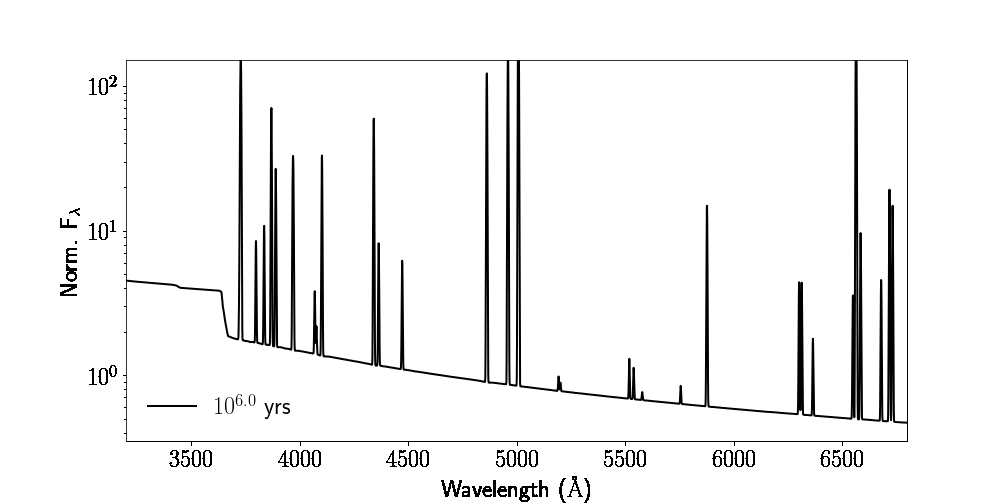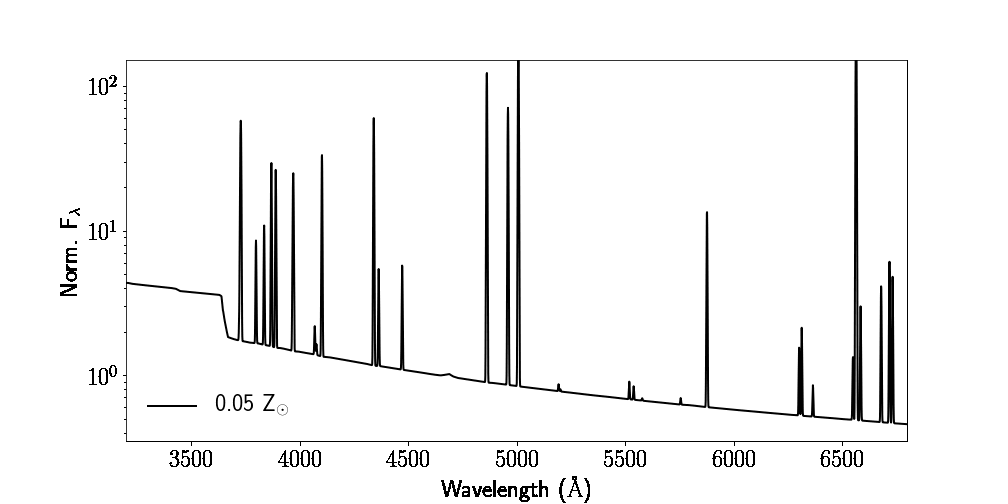
Research
My research focuses on bridging our deepest understanding of galaxies, which comes from the local galaxies in our backyard, with the first seeds of galaxies in the very distant and early universe. To accomplish this I use space- and large ground-based observatories to study the spectral properties of light from star-forming regions. This page serves as an introduction to my research by exploring some of the ways we learn about other galaxies using spectra.
Research
Overview
I measure the properties of the gas surrounding clusters of recently formed stars in many galaxies. These hot stars produce copious numbers of ultraviolet (UV) photons, where the photons with wavelengths < 912 Å ionize the (predominantly H) gas around them. Within these ionized regions, called HII Regions, H atoms are continuously cycling between being ionized by the young stars and recombining with the free electrons - a process that subsequently produces strong H emission lines. There is also lots of He in HII regions and small amounts of other elements heavier than H and He that we call metals. While small in number, the metals in the gas play important roles in several galaxy evolution processes. One of the most powerful diagnostic tools I use is recording the abundance of these metals, or the metallicity, in a galaxy because the most common metals (such as O, N, and C) are produced by nucleosynthetic processes in stars and the total amount of metals in the gas progressively increases with successive generations of stars. Therefore, the chemical composition of a galaxy serves as a fossil record, encoding the cumulative star formation (SF), accretion, and outflow processes that shaped the present-day gas in galaxies, or interstellar medium (ISM).
By observing the the emission features in spectra of HII regions, we can measure features that are sensitive to different gas-phase (nebular) properties such as nebular density, temperature, ionization, metallicity, and stellar population age. Below, you can interact with some theoretical optical spectra of HII regions to see for yourself home different features are affected by these properties.
Definitions
Ionized gas:
When energetic UV photons interact with gas, they remove electrons from (ionize) the atoms.
An atom with one electron removed is called a singly-ionized ion.
An atom with two electrons removed is called a doubly-ionized ion.
And so on.
Atomic Notation:
X = ion of element X with charge +i.
Spectroscopic Notation:
XI = nuetral atom of element X.
XII = singly-ionized element X.
XIII = doubly-ionized element X.
And so on.
The notation for ions is is also combined with brackets to represent the likliness for them to spontaneously emit (set by their Einstein-A coefficients). For example, for double ionized-oxygen:
OIII = permitted or a short lifetime (likely to emit)
OIII] = semi-forbidden or a moderate lifetime (less likely to emit)
[OIII] = forbidden or long lifetime (low probability of emission)
HII Region:
A region of ionized H surrounding massive stars is called an HII region.
Metallicity:
All elements heavier than H and He are considered metals and are a marker of evolution, as these elements must be created by successive generations of star formation. In HII regions, oxygen is easy to measure and so O/H abundance is the default proxy for metallicity in these regions.
Ionization Parameter:
The ioniation parameter (U) is an indicator for how ionized an HII region is. This is typically is measured using a ratio of two different ioniation states for a given element, such as [OIII]/[OII].
+i
Optical
Spectra
Evolving Spectra:
In the plots below, you will see a model emission line spectra and how the strengths of the lines change as a function of metallicity and age.


Interactive Spectra:
In the plots below, you should be able to interact with the plots in a few ways:
-
Hovering over identification lines below the spectrum reveals the line name and wavelength
-
Different spectra can be turned on or off by clicking on them in the legend
-
You can zoom in by click and holding as you pan over a region of interest
-
You can resent the window to its original axes ranges by clicking on the house icon ('Reset axes')
-
And more ...




